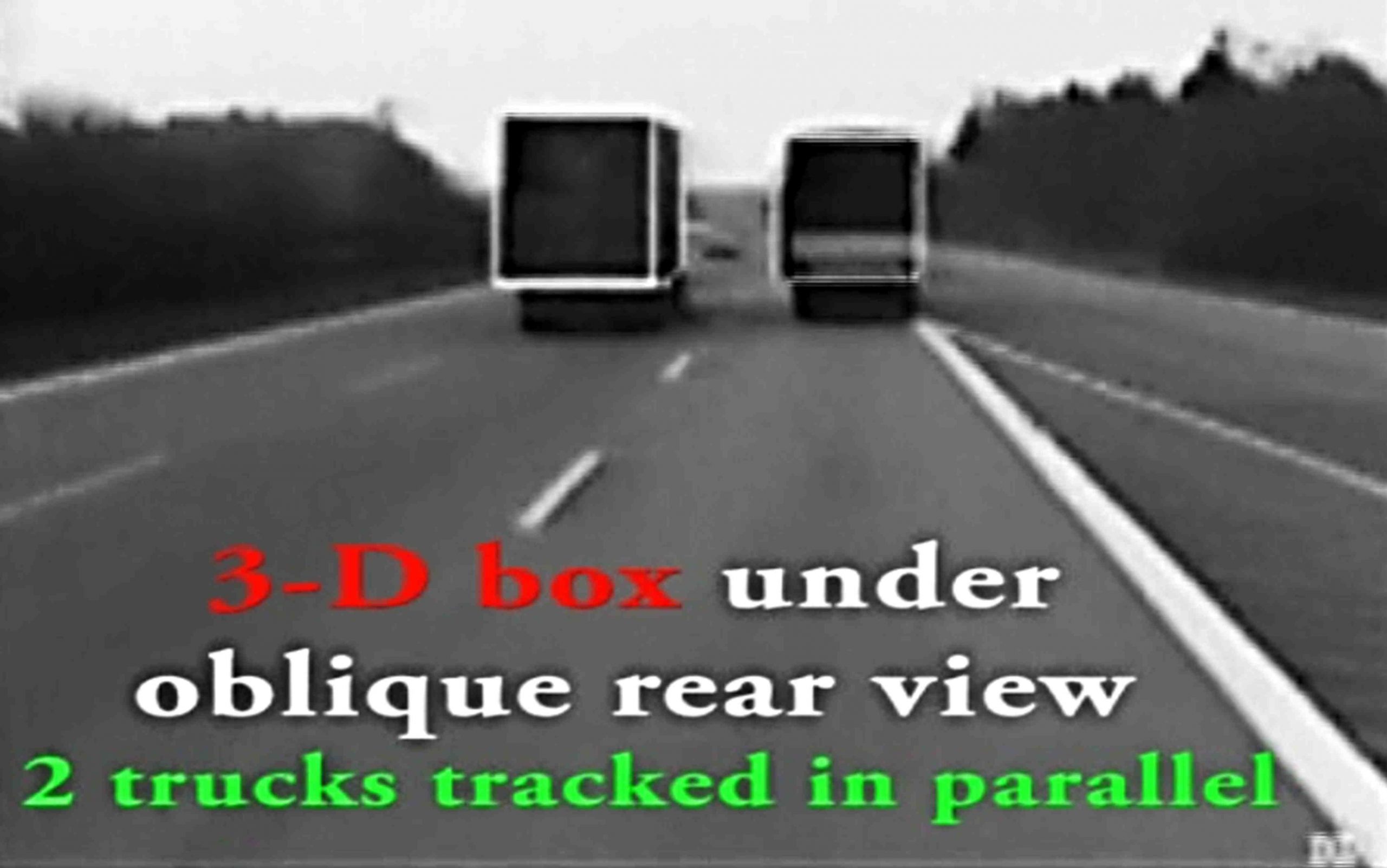Contrary to cars, for which the lower part of the body can be well approximated by a (rounded) rectangular box, trucks usually have a simple shape as top part (often a much larger rectangular box than car bodies), and it is above ~ 1 m elevation). A much more irregular appearance can be noted in their lower part with axles, wheels, tanks, chassis etc. Due to the large size, trucks often obscure a large fraction of the scene, especially when nearby. To be able to check the possibility of passing, the length of the truck should be recognized rather precisely from a slightly oblique view.
Another typical dangerous situation is experienced when from a sequence of trucks in the neighboring lane, the second or third one ahead suddenly starts switching lane with no or only a short notice by a blinker signal. This topic has been looked at by [Schmid 1994].
Another lesson learned for oblique views was that the diagonal of a rectangular box can be estimated much better than the equivalent parameters length and width, especially when rounded corners are present like in real vehicles.
References
Schmid M (1993). Real Time Recognition of Partially Occluded Vehicles by Dynamic Vision. ECC, Groningen, NL
Schmid M, Thomanek F (1993). Real Time Detection and Recognition of Vehicles for an Autonomous Guidance and Control System. Pattern Recognition and Image Analysis, Vol. 3, No. 3, pp 377-380
Schmid M (1994). An Approach to Model-based 3-D Recognition of Vehicles in Real Time by Machine Vision. IEEE-Conf. on Intelligent Robots and Systems (IROS’94), Neubiberg
Schmid M (1994). 3-D-Erkennung von Fahrzeugen in Echtzeit aus monokularen Bildfolgen. Dissertation, UniBwM / LRT. Kurzfassg
